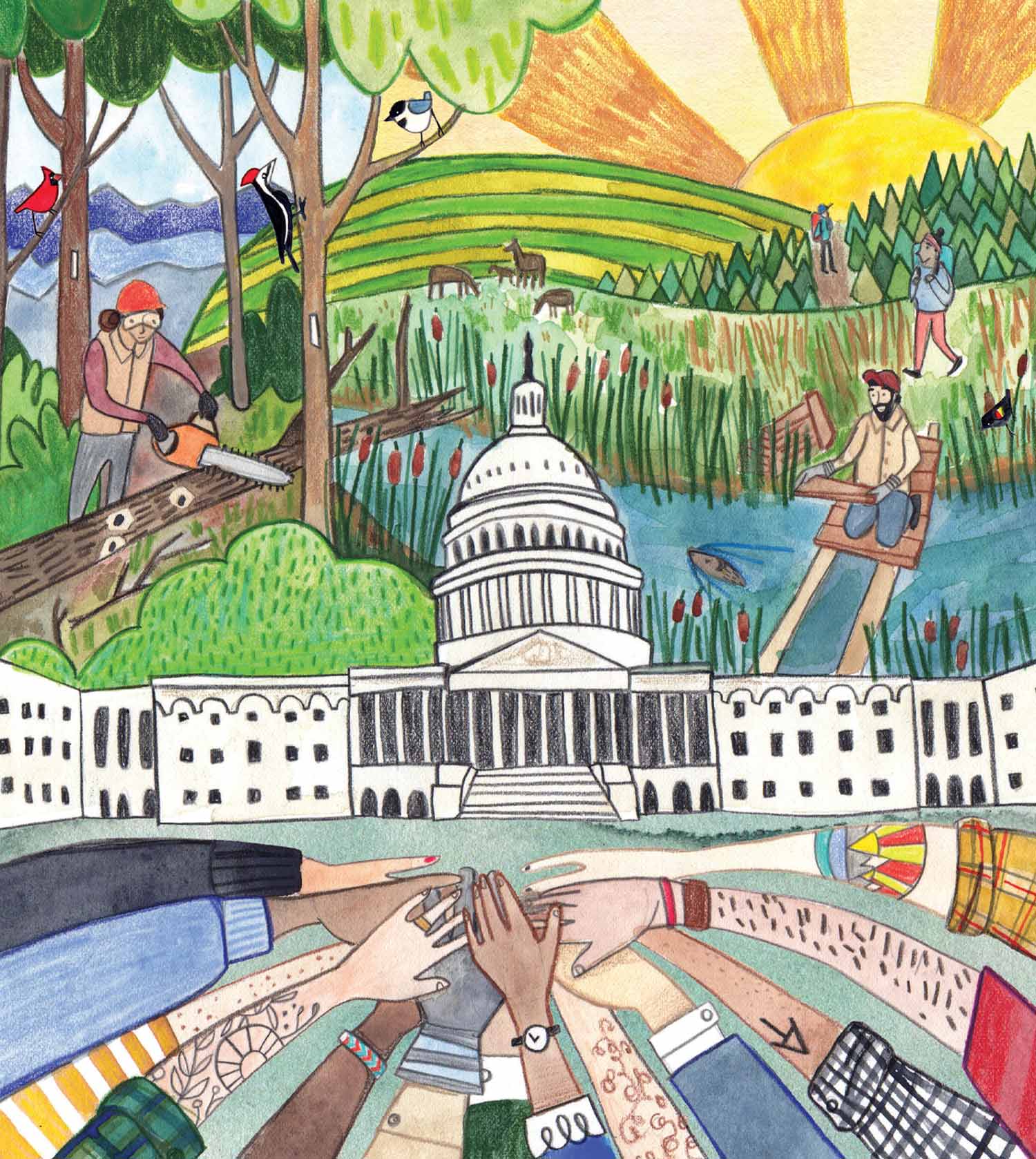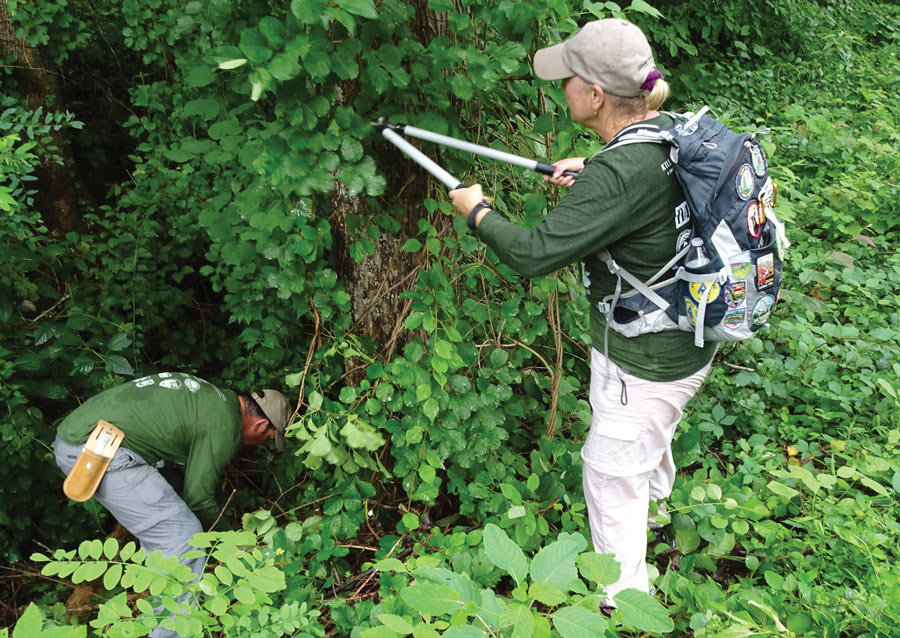
Illustration by Katie Eberts


Illustration by Katie Eberts
Advocacy has been an integral aspect of our work since ATC’s inception — it’s in our DNA. Advancing Benton MacKaye’s original vision for a “Realm united by a Trail,” coordinating the maintaining clubs, enlisting hundreds of volunteers to construct the Trail, advancing the National Trails System Act in Congress (which took about 20 years), and connecting the Trail parcel by parcel and preserving what we call the Wild East Landscape are all expressions of the imperative to advocate for the Trail. Today, the ATC wants to ensure the hard work, commitment, and dedication of those who came before us is sustained so that millions of people every year can continue to enjoy the Trail.
Photo by Raymond Salani III
Related to pipeline-siting, the ATC also submitted an amicus brief to the U.S. Supreme Court defending the cooperative management system and explaining the development of the A.T. in a recent lawsuit that called into question the division of responsibilities painstakingly negotiated by the ATC, Trail clubs, and the federal and state governments over the past 100 years. While the ATC has strong objections to the current process for evaluating, permitting, and licensing pipelines — for reasons relating to the conservation of public lands, individual property rights, market need, and the growing impacts of climate change — our role in that lawsuit was not to take a position on whether the pipeline was needed. Rather, it was about making sure that the ATC, the clubs, and all of our support retain an active and substantial role in the Trail that, but for our members’ and supporters’ involvement, wouldn’t exist at all.

Every one of the volunteers on the A.T. advocates by sharing their experience, setting out with one of our skilled Trail crews, and letting their elected officials know why the Trail is important and how we should be working together to preserve it. Very few units of the National Park Service are bolstered by the dedication and sweat equity of so many committed and activated individuals. A.T. volunteers, approaching 100 years of relevance and expertise, are truly an inspiring model of civic engagement. Volunteers and hikers are among the most important advocates for the Trail and the ATC wants to ensure that the hard work, commitment, and dedication of those who came before us is sustained so that the Trail continues to inspire another century of volunteers, visitors, and visionaries.
I am incredibly fortunate to work with an amazing team that is comfortable in the woods and can just as easily get suited up for a visit to Congress to speak from their hearts about what the Trail needs. ATC senior regional director Andrew Downs sums it up best when he says, “There are a lot of organizations that are focused on many other things and that do excellent work protecting the environment, but there’s only one organization in the whole world that’s dedicated solely to the Appalachian Trail. And we have to make sure that our decision process reflects that level of focus, because if it’s not ATC that speaks for the Trail and only the Trail, then no one else will.”